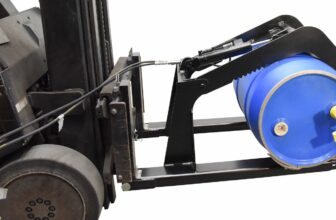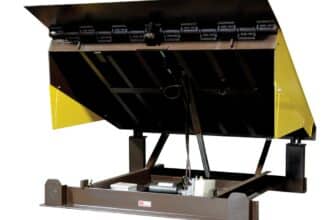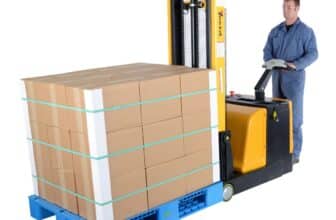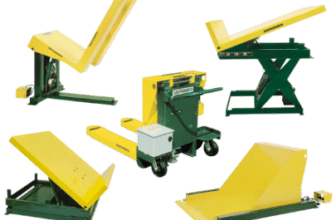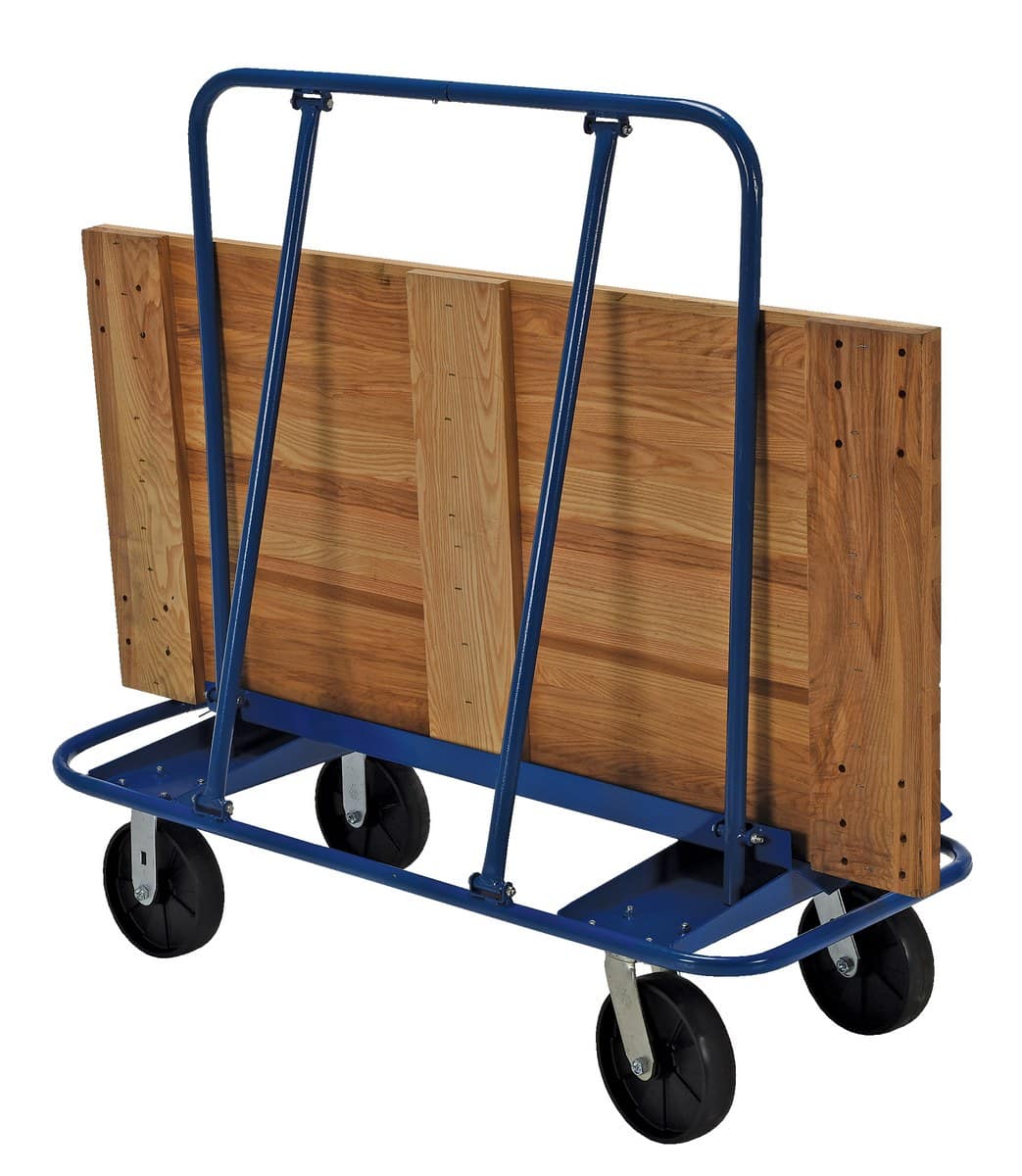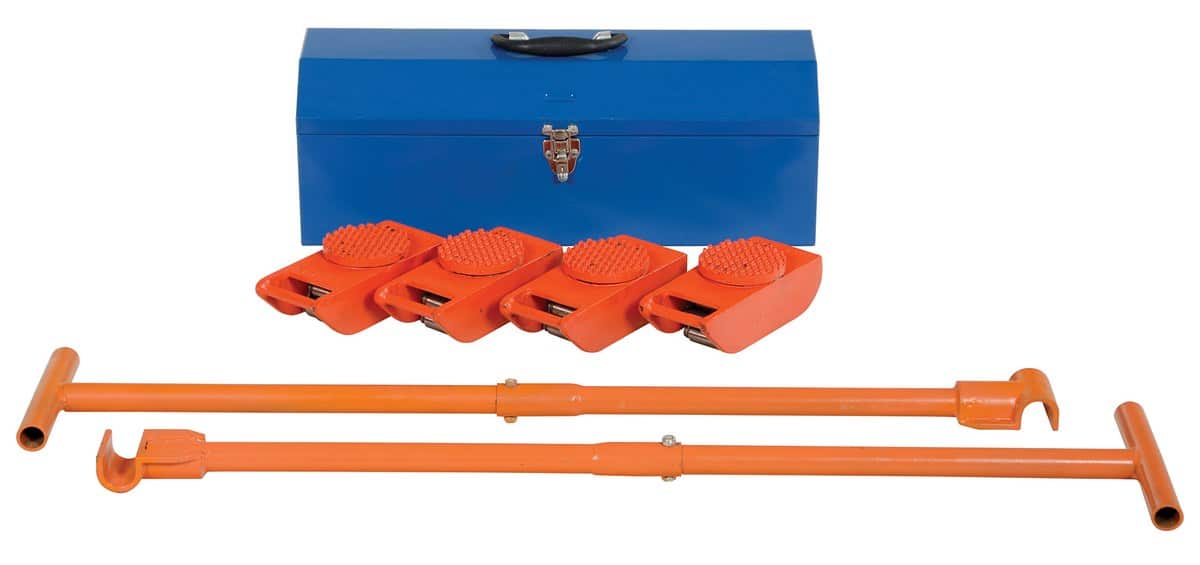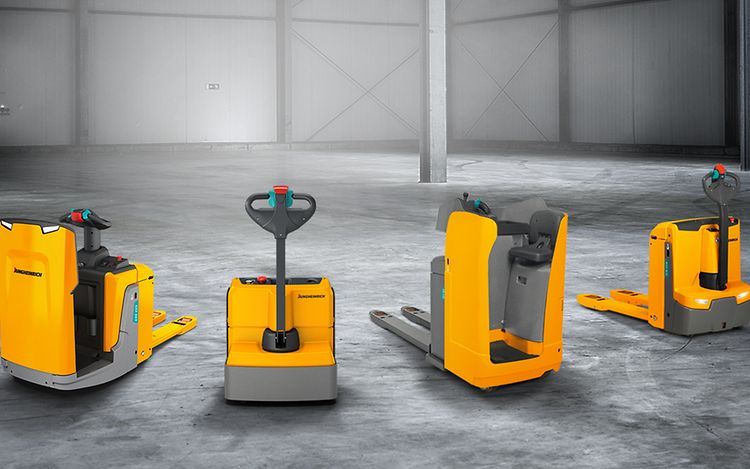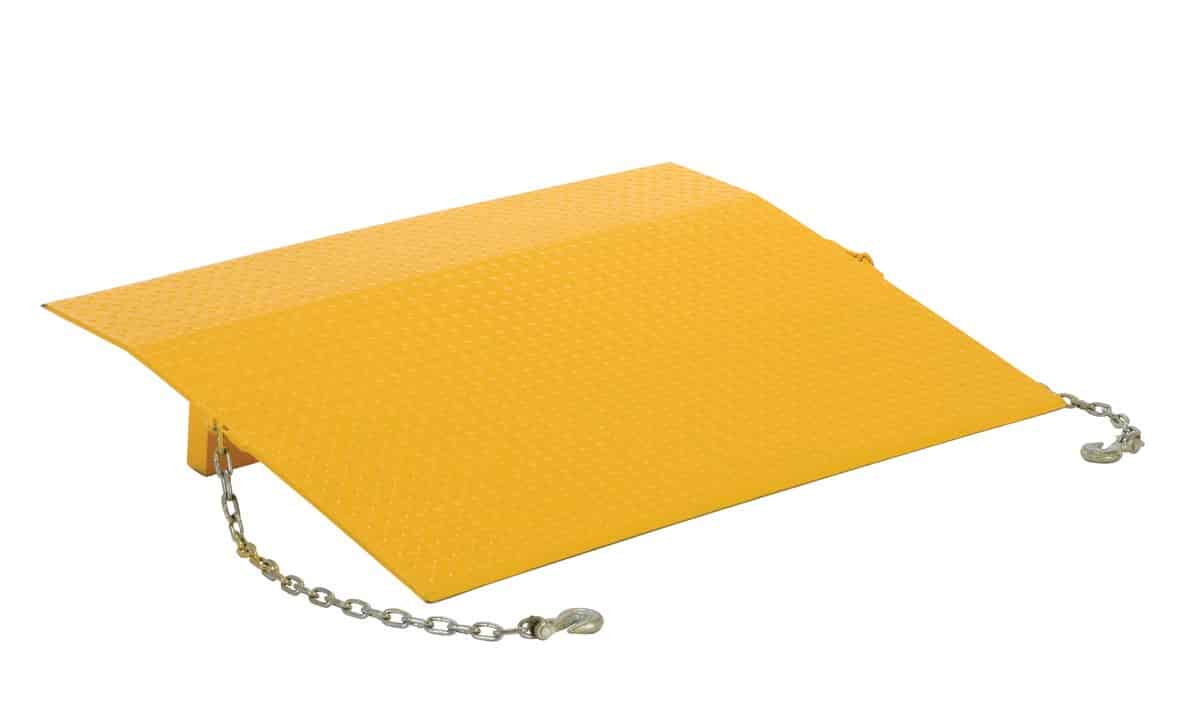
Industrial engineering plays a pivotal role in optimizing efficiency and productivity within warehouses and material handling facilities. One critical aspect of this discipline is the design and implementation of effective loading dock systems. In this comprehensive guide, we will delve into the world of dock plates and loading dock boards, exploring their various types, applications, and benefits. Whether you are a warehouse manager, a forklift operator, or simply interested in understanding the intricacies of material handling, this article will provide you with valuable insights and practical knowledge.
Section 1: Understanding Loading Dock Systems
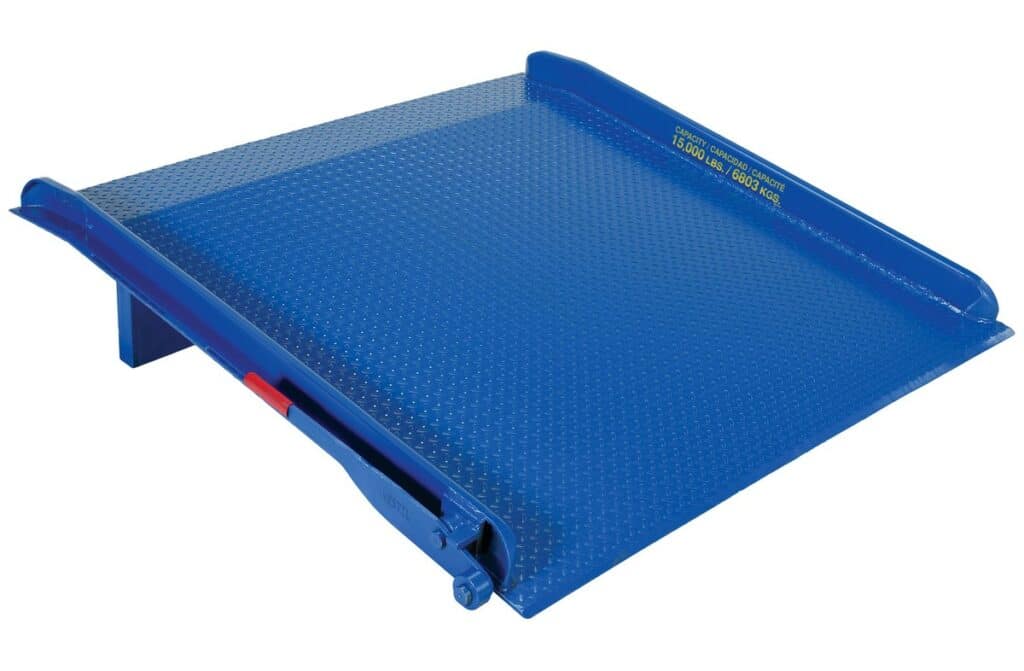
What are Dock Plates?
Dock plates, also known as dock boards, are essential components of loading dock systems. They serve as bridging devices, connecting the warehouse or facility’s dock to trucks, trailers, or other transportation vehicles for efficient loading and unloading of goods. Dock plates are typically made of durable materials such as steel, aluminum, or plastic, depending on their specific application requirements.
Types of Dock Plates
Steel Dock Plates
Steel dock plates are renowned for their exceptional strength and durability, making them suitable for heavy-duty applications. They are often used in facilities that handle robust loads and require long-lasting solutions. Steel dock plates are capable of withstanding the weight and impact associated with forklifts, pallet jacks, and other industrial equipment.
Aluminum Dock Plates
Aluminum dock plates offer a balance between strength and weight. They are lighter than steel dock plates while still maintaining robust load-bearing capabilities. Aluminum dock plates are commonly used in applications where portability and ease of handling are crucial, such as in smaller warehouses or facilities with frequently changing layouts.
Plastic Dock Plates
Plastic dock plates provide a lightweight and cost-effective alternative to traditional metal options. They are suitable for light to moderate loads and are often used in environments where corrosion resistance is essential. Plastic dock plates are particularly useful in wet or humid conditions where moisture may cause damage to metal surfaces.
Lightweight Dock Plates
Lightweight dock plates are designed to offer ease of handling and maneuverability. They are typically made from aluminum or plastic and are ideal for applications requiring frequent repositioning or where loading and unloading operations involve smaller loads. Lightweight dock plates are portable, making them convenient for businesses that operate in multiple locations.
Dock Plates vs. Dock Boards
Dock plates and dock boards are often used interchangeably, but there are distinct differences between the two.
Dock plates are typically flat, simple structures designed for bridging small gaps between the dock and the transportation vehicle. They are suitable for light to moderate loads and are manually positioned in place. Dock plates are versatile, easy to handle, and can be used with various types of vehicles.
On the other hand, dock boards are more robust and feature additional safety features. They often have curbs or edges to prevent forklifts and other equipment from slipping off the sides. Dock boards are available in various lengths and widths and can accommodate higher load capacities than dock plates. They are typically used for heavy-duty applications and provide a safer transition between the dock and the vehicle.
Choosing the Right Dock Plate for Your Needs
Selecting the appropriate dock plate depends on several factors, including load capacity, usage frequency, vehicle types, and environmental conditions. Here are some essential considerations when choosing a dock plate:
- Load Capacity: Determine the maximum weight your dock plate needs to support. It is crucial to consider both the static load (when the load is stationary) and the dynamic load (when the load is in motion) to ensure the dock plate’s durability and safety.
- Vehicle Compatibility: Consider the types of vehicles that will be using the dock plate. Ensure that the dock plate dimensions, weight capacity, and surface materials are suitable for the vehicles’ size, weight, and wheel configuration.
- Environment: Evaluate the environmental conditions in which the dock plate will be used. Factors such as moisture, temperature variations, and corrosive substances may impact the choice of material, as different dock plate materials offer varying degrees of resistance to these elements.
- Safety Features: Assess the safety features necessary for your specific application. If you require additional safety measures, such as curbs, non-slip surfaces, or integrated handles, consider selecting dock boards that offer these options.
- Ergonomics: Consider the ease of use and maneuverability of the dock plate. If your operation involves frequent repositioning or portability, opt for lightweight or portable dock plates that can be easily handled and transported.
By carefully assessing these factors, you can select a dock plate that meets your operational requirements, enhances safety, and improves overall efficiency.
Section 2: Exploring Loading Dock Boards
The Importance of Loading Dock Boards
Loading dock boards, also known as loading dock bridges or loading dock ramps, are crucial components of an efficient loading dock system. They provide a stable and secure bridge between the dock and the transportation vehicle, enabling smooth and safe movement of goods. Loading dock boards are designed to accommodate various vehicle heights, load capacities, and equipment types, making them versatile solutions for material handling operations.
Common Types of Loading Dock Boards
Steel Dock Boards
Steel dock boards are renowned for their durability and strength, making them suitable for heavy-duty applications. They are designed to handle significant loads and endure the rigors of frequent forklift and equipment traffic. Steel dock boards often feature reinforced curbs, anti-slip surfaces, and safety chains to ensure secure movement between the dock and the vehicle.
Aluminum Dock Boards
Aluminum dock boards offer a lightweight yet sturdy alternative to steel dock boards. They provide excellent strength-to-weight ratios and are ideal for applications where portability and ease of handling are essential. Aluminum dock boards are resistant to corrosion, making them suitable for outdoor use or in environments exposed to moisture or chemicals.
Portable Dock Boards
Portable dock boards are designed for versatility and convenience. They are lightweight and easy to maneuver, allowing businesses to quickly adapt to changing loading and unloading requirements. Portable dock boards often feature built-in handles, making them easy to position and transport. They are commonly used in applications where frequent repositioning or multiple loading points are necessary.
Adjustable Dock Boards
Adjustable dock boards provide flexibility in accommodating different vehicle heights. They feature adjustable legs or lip extensions that can be modified to match the specific height of the transportation vehicle. This versatility ensures a seamless transition between the dock and the vehicle, minimizing the risk of accidents and increasing efficiency.
Dock Boards vs. Dock Plates
While dock plates and dock boards serve similar purposes, there are distinct differences between the two.
Dock boards are larger and more robust than dock plates. They typically have higher load capacities, reinforced curbs, and additional safety features such as non-slip surfaces and safety chains. Dock boards are designed for heavy-duty applications and provide a secure transition between the dock and the vehicle, accommodating various equipment types and load sizes.
Dock plates, on the other hand, are lighter and simpler in design. They are suitable for light to moderate loads and offer flexibility in terms of usage and vehicle compatibility. Dock plates are often manually positioned and are commonly used in applications where smaller loads or frequent repositioning are involved.
Selecting the Ideal Loading Dock Board
When choosing a loading dock board, consider the following factors:
- Load Capacity: Determine the maximum weight the dock board needs to support. Consider both static and dynamic loads to ensure the board’s durability and safety.
- Vehicle Compatibility: Assess the types of vehicles that will be using the dock board. Ensure that the board’s dimensions, weight capacity, and surface materials are suitable for the vehicles’ size, weight, and wheel configuration.
- Safety Features: Evaluate the safety features necessary for your application. Look for features such as reinforced curbs, non-slip surfaces, safety chains, or integrated handles to enhance safety and prevent accidents.
- Adjustability: If your operation involves a range of vehicle heights, consider adjustable dock boards with flexible leg or lip extensions to accommodate different heights effectively.
- Portability: If you require mobility and versatility, opt for portable dock boards that are lightweight and equipped with handles for easy positioning and transportation.
By carefully considering these factors, you can select the ideal loading dock board that matches your operational requirements, ensures safety, and facilitates efficient material handling processes.
Section 3: Applications and Benefits of Dock Plates and Loading Dock Boards
Warehouse Dock Plates: Enhancing Efficiency and Safety
Dock plates and loading dock boards play a vital role in warehouse operations, improving both efficiency and safety. By bridging the gap between the dock and the transportation vehicle, these devices allow for seamless loading and unloading processes. Warehouse dock plates and boards enable smooth material flow, minimizing the risk of accidents, and optimizing productivity.
Dock Plates for Forklifts: Streamlining Material Handling Operations
Forklifts are essential tools in material handling operations, and dock plates specifically designed for forklifts enhance their efficiency and functionality. These dock plates provide a secure transition between the dock and the forklift, allowing for seamless movement of goods. They are engineered to handle the weight and impact associated with forklift operations, ensuring smooth and safe material handling processes.
Heavy-Duty Dock Plates: Handling Robust Loads with Ease
In facilities dealing with heavy loads and equipment, heavy-duty dock plates are indispensable. These robust structures are designed to withstand significant weights and endure the demanding nature of industrial environments. Heavy-duty dock plates ensure the safe and efficient movement of heavy loads, preventing structural damage and optimizing material handling operations.
Dock Plates for Warehouses: Optimizing Workflow and Productivity
Warehouses with a high volume of incoming and outgoing goods greatly benefit from the installation of dock plates. By providing a smooth transition between the warehouse and transportation vehicles, these plates optimize workflow and increase productivity. Dock plates facilitate quick and efficient loading and unloading, reducing downtime and streamlining operations.
Loading Dock Boards: Seamless Transition Between Trucks and Loading Areas
Loading dock boards are invaluable when it comes to seamless transitions between trucks and loading areas. They ensure a level bridge between the truck bed and the dock, enabling safe movement of goods and minimizing the risk of accidents. Loading dock boards accommodate different vehicle heights and configurations, allowing for efficient loading and unloading across various transportation vehicles.
The Advantages of Steel Dock Plates and Boards
Steel dock plates and boards offer several advantages in industrial settings. Their exceptional strength and durability make them ideal for heavy-duty applications. Steel dock plates and boards can handle significant loads, withstand the impact of forklifts and equipment, and ensure a safe transition between the dock and the vehicle. They provide long-lasting solutions, reducing the need for frequent replacements and minimizing downtime.
Lightweight and Portable Dock Plates: Flexibility and Convenience
Lightweight and portable dock plates offer flexibility and convenience, particularly in operations that require frequent repositioning or involve smaller loads. These dock plates are easy to handle, maneuver, and transport. They provide quick and convenient solutions for businesses operating in multiple locations or in situations where material handling requirements change frequently.
Frequently Asked Questions (FAQs)
What is the difference between dock plates and dock boards?
Dock plates and dock boards are both essential components used to bridge the gap between the dock and the transportation vehicle during loading and unloading operations. While they serve a similar purpose, there are distinct differences between the two.
Dock plates are typically flat, simple structures designed to bridge small gaps. They are suitable for light to moderate loads and provide flexibility in terms of usage and vehicle compatibility. Dock plates are often manually positioned and are commonly used in applications where smaller loads or frequent repositioning are involved.
Dock boards, on the other hand, are larger and more robust than dock plates. They often feature reinforced curbs, anti-slip surfaces, and safety chains to ensure secure movement between the dock and the vehicle. Dock boards are designed for heavy-duty applications and provide a safer transition between the dock and the vehicle, accommodating various equipment types and load sizes.
How do I choose the right dock plate for my needs?
Choosing the right dock plate for your specific needs requires careful consideration of several factors:
Load Capacity: Determine the maximum weight your dock plate needs to support. Consider both the static load (when the load is stationary) and the dynamic load (when the load is in motion) to ensure the dock plate’s durability and safety.
Vehicle Compatibility: Assess the types of vehicles that will be using the dock plate. Ensure that the dock plate dimensions, weight capacity, and surface materials are suitable for the vehicles’ size, weight, and wheel configuration.
Environment: Evaluate the environmental conditions in which the dock plate will be used. Factors such as moisture, temperature variations, and corrosive substances may impact the choice of material, as different dock plate materials offer varying degrees of resistance to these elements.
Safety Features: Consider the safety features necessary for your specific application. If you require additional safety measures, such as curbs, non-slip surfaces, or integrated handles, consider selecting dock plates that offer these options.
Ergonomics: Take into account the ease of use and maneuverability of the dock plate. If your operation involves frequent repositioning or portability, opt for lightweight or portable dock plates that can be easily handled and transported.
By carefully assessing these factors, you can select a dock plate that meets your operational requirements, enhances safety, and improves overall efficiency.
Are dock plates suitable for heavy loads?
Dock plates are generally designed for light to moderate loads. For heavy loads, it is recommended to use heavy-duty dock plates or loading dock boards specifically designed to handle robust weights. These heavy-duty options provide the necessary strength and stability required for heavy load applications, ensuring safe and efficient material handling.
Can dock boards accommodate different vehicle heights?
Yes, many dock boards offer adjustable features to accommodate different vehicle heights. Adjustable dock boards may have extendable legs or lip extensions that can be modified to match the specific height of the transportation vehicle. This flexibility ensures a seamless transition between the dock and the vehicle, regardless of the vehicle height, improving efficiency and safety during loading and unloading operations.
What are the safety features available for dock plates and loading dock boards?
Dock plates and loading dock boards can be equipped with various safety features to enhance stability and prevent accidents. Some common safety features include:
Reinforced Curbs or Edges: These prevent forklifts and other equipment from slipping off the sides of the dock plate or board, providing added security during material handling.
Non-Slip Surfaces: Anti-slip surfaces ensure a firm grip for both equipment and personnel, reducing the risk of slips and falls during loading and unloading processes.
Safety Chains: These chains help secure the dock plate or board to the dock and the transportation vehicle, preventing unintended movement or dislodging during operations.
Integrated Handles: Handles integrated into the dock plate or board design facilitate easy positioning, maneuverability, and transportation, enhancing ergonomic operation.
The availability of specific safety features may vary depending on the manufacturer and the type of dock plate or board. When selecting a dock plate or loading dock board, consider your specific safety requirements and opt for models that offer the necessary safety features to ensure a secure and accident-free material handling environment.
How are dock plates and dock boards different?
Dock plates and dock boards differ in terms of size, load capacity, and features. Dock plates are typically lighter and simpler in design, suitable for light to moderate loads and applications with smaller gaps between the dock and the vehicle. Dock boards are larger, sturdier, and offer higher load capacities. They often feature reinforced curbs, non-slip surfaces, and additional safety measures.
What are the key factors to consider when choosing a dock plate?
Important factors to consider when choosing a dock plate include load capacity, vehicle compatibility, environmental conditions, safety features, and ergonomics. Assessing these factors ensures that the selected dock plate meets operational requirements, enhances safety, and improves efficiency.
Section 5: Conclusion
Dock plates and loading dock boards are essential components of an efficient and safe material handling system. They provide a secure bridge between the dock and the transportation vehicle, enabling smooth loading and unloading processes. By choosing the appropriate dock plate or loading dock board based on factors such as load capacity, vehicle compatibility, safety features, and environmental conditions, businesses can enhance efficiency, optimize workflow, and ensure the safety of their material handling operations.
#DockPlates #LoadingDockBoards #MaterialHandling #WarehouseLogistics #IndustrialEngineering #Efficiency #Safety #MaterialHandlingEquipment #Forklifts #DockingSolutions




